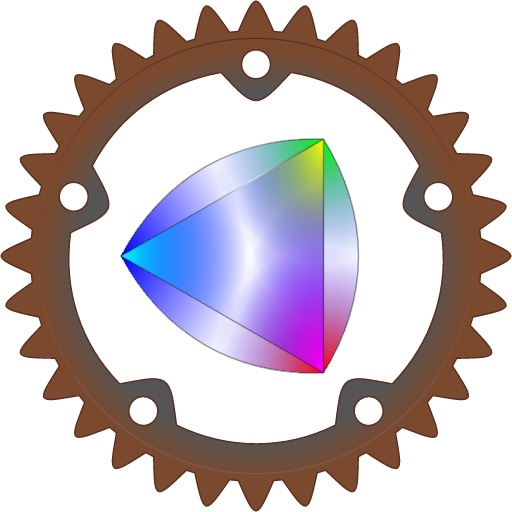 Safe Rust bindings to the Skia Graphics Library.
Safe Rust bindings to the Skia Graphics Library.
This packages contains safe Rust wrappers for Skia and uses skia-bindings to build and interface with the Skia C++ library.
For information about the supported build targets and how to run the examples, please visit the github page of the rust-skia project.
Function level documentation is not yet available. To get started, take a look at the Rust examples or the Skia documentation.
Skia-safe wraps most parts of the public Skia C++ APIs:
- Vector Geometry: Matrix, Rect, Point, Size, etc.
- Most drawing related classes and functions: Surface, Canvas, Paint, Path.
- Effects and Shaders.
- Utility classes we think are useful.
- PDF & SVG rendering
- Skia Modules
- GPU Backends
- Vulkan
- OpenGL
- Metal
- Direct3D
- WebGPU Dawn
Wrappers for functions that take callbacks and virtual classes are not supported right now. While we think they should be wrapped, the use cases related seem to be rather special, so we postponed that for now.
By default, full builds and prebuilt binaries of all platforms support the following image formats1:
| Decoding | Encoding |
|---|---|
| BMP, GIF, ICO, JPEG, PNG, WBMP | JPEG, PNG |
In addition to that, support for the WEBP image format can be enabled through the features webp-encode, webp-decode, and webp explained below.
Skia-safe supports the following features that can be configured via cargo:
Platform support for OpenGL or OpenGL ES can be enabled by adding the feature gl. Since version 0.25.0, rust-skia is configured by default to enable CPU rendering only. Before that, OpenGL support was included in every feature configuration. To render the examples with OpenGL, use
(cd skia-org && cargo run --features gl [OUTPUT_DIR] --driver opengl)These features are configure the Window manager integration. They are supported on Linux based platforms and enable the gl feature implicitly:
egl uses EGL instead of GLX to set up OpenGL contexts, a prerequisite for enabling wayland.
x11 enables support for setting up X11 OpenGL contexts.
wayland enables support for the Wayland display server protocol and implicitly enables egl.
Vulkan support can be enabled by adding the feature vulkan. To render the examples with Vulkan, use
(cd skia-org && cargo run --features vulkan [OUTPUT_DIR] --driver vulkan)Note that Vulkan drivers need to be available. On Windows, they are most likely available already, on Linux this article on linuxconfig.org might get you started, and on macOS with Metal support, install the Vulkan SDK for Mac and configure MoltenVK by setting the DYLD_LIBRARY_PATH, VK_LAYER_PATH, and VK_ICD_FILENAMES environment variables as described in Documentation/getting_started_macos.html.
Support for Metal on macOS and iOS targets can be enabled by adding the feature metal.
The Direct3D backend can be enabled for Windows targets by adding the feature d3d.
The Cargo feature textlayout enables text shaping with Harfbuzz and ICU by providing bindings to the Skia modules skshaper and skparagraph.
The skshaper module can be accessed through skia_safe::Shaper and the Rust bindings for skparagraph are in the skia_safe::textlayout module.
webp-encode enables support for encoding Skia bitmaps and images to the WEBP image format, and web-decode enables support for decoding WEBP to Skia bitmaps and images. The webp feature can be used as a shorthand to enable the webp-encode and webp-decode features.
binary-cache enables download pre-built skia binaries instead of building them locally.
Usually when Skia is used on Windows, the file icudtl.dat must be available in your executable's directory. But if this default feature is enabled, the icudtl.dat file is directly embedded in Rust and is automatically initialized before any of the textlayout features are used.
If this feature is disabled, the icudtl.dat file needs to be copied from the build's output directory to the executable's directory. If your executable directory is writable, this can be done by calling the function skia_safe::icu::init() before the skia_safe::textlayout module is used.
The output directory is displayed when skia-bindings is compiled with cargo build -vv | grep "ninja: Entering directory",
Simple examples of how to use the skshaper and skparagraph module bindings can be found in the skia-org example command line application.
On most platforms, Skia builds and runs well with the FreeType version that is already installed. If you encounter FreeType related build errors on older platforms (like with for example Debian 9 "stretch"), embed-freetype makes sure that FreeType is built and embedded alongside with Skia.
Conflicting with Rust philosophy, we've decided to fully support Skia's reference counting semantics, which means that all reference counted types can be cloned and modified from within the same thread. To send a reference counted type to another thread, its reference count must be 1, and must be wrapped with the Sendable type and then unwrapped in the receiving thread. The following functions support the sending mechanism:
Every mutable reference counted type implements the following two functions:
can_send(&self) -> bool
returns true if the handle can be sent to another thread right now.
wrap_send(self) -> Result<Sendable<Self>, Self>
wraps the handle into a Sendable type that implements Send.
And the Sendable type implements:
unwrap(self)
which unwraps the original handle.
For more information about the various wrapper types, take a look at the rust-skia wiki.
Footnotes
-
skia-safe versions before 0.34.1 had no support for decoding GIF images. ↩